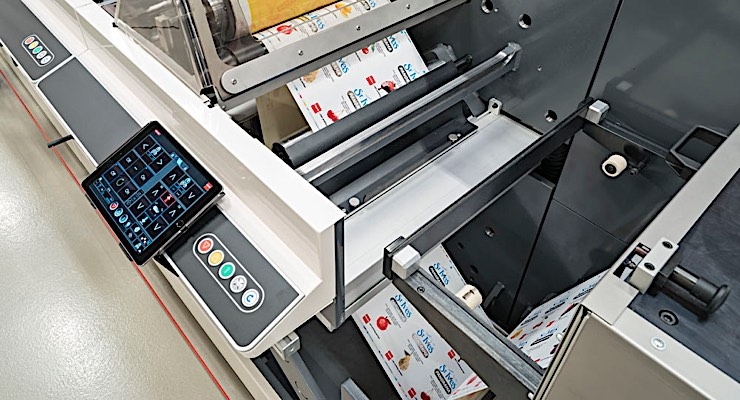
When examining historic packaging print technologies—flexography, offset, gravure, and electrophotographic—we now observe the rising competition from production inkjet, which is finally achieving the quality, size, and performance necessary for many packaging applications. However, unlike the transformational technologies affecting commercial print, packaging demands even higher standards in quality, productivity, and cost. Offset printing has reduced many labor functions and preparation time to defend its market share. Digital print technologies like electrophotographic and production inkjet offer on-demand and variable data features, but their cost and performance still lag behind and likely will for some time.
Meanwhile, flexography, the dominant method in packaging print production, is experiencing a technological renaissance. Numerous digital enhancements have been introduced to the flexo process, resulting in extremely high-quality prints with high productivity and low cost, significantly defending against other print technologies. While the basic principles of flexography remain unchanged, digital enhancements are improving everything from transport to imaging, boosting automation, quality, and control, which help producers enhance operational efficiency and reduce environmental impact.
In transport, visual and other sensing technologies combined with digital servo controls reduce operator involvement and improve control. In imaging, advancements like the FLEXCEL NX Technology from Miraclon enable precisely controlled plate imaging and sophisticated digitally surface-textured plates, bringing printed image quality in line with offset, gravure, and digital technologies. This allows for efficient print production practices uncommon in traditional flexo, such as printing by numbers and extensive use of process color printing.
The key enabler of the quality, performance, and sustainability benefits of modern flexo is the plate. Ongoing development of plate surface patterning has given flexo new levels of ink transfer control. The latest development, PureFlexo Printing, addresses unwanted ink spread, reducing press setup time and unscheduled stoppages for plate cleaning. Better ink control leads to a more reliable process with increased sustainability by reducing machine operating time and material waste.
Flexo ink manufacturing and "in press" ink control have also seen significant advancements, enabling converters to achieve consistent and predictable results, facilitating printing by numbers, even automatically with some press technologies. Standards efforts like ECG (extended color gamut) printing, which can achieve almost 90% of the Pantone color library with CMYKOGV, reduce the need for ink color changes. Success with ECG implementation requires standardization, process control, and plate technology that guarantees predictability and stability of process color builds.
The rise of modern flexo and emerging digital solutions raises the question: what printing technology is right for packaging? This is a complex question with no binary answer. Packaging print includes diverse applications such as labels, folding cartons, flexible packaging, and corrugated materials, each with unique requirements. While digital technologies are typically associated with on-demand and variable data printing, new digitalized flexo presses can offer on-demand flexo printing at lower costs and higher productivity than any digital solution. Hybrid flexo presses can also handle variable data.
The industry’s lack of skilled labor, combined with the pressures on printers to increase yields and implement sustainability improvements, necessitates less "craft" and more efficient, intervention-free printing that meets a full range of client demands. This is where modern flexo excels, enabling printers to achieve efficiency, sustainability, and quality goals.
Thus, similar to the decisions faced with the introduction of digitalized offset presses and electrophotographic and inkjet technologies, the most critical question is: what are the application needs? Equally important are the cost and productivity considerations. The packaging marketplace demands that quality, cost, and productivity be taken into account. In the end, especially during technology transitional periods, the answer may not be binary, and multiple technologies may be required to meet various requirements.







